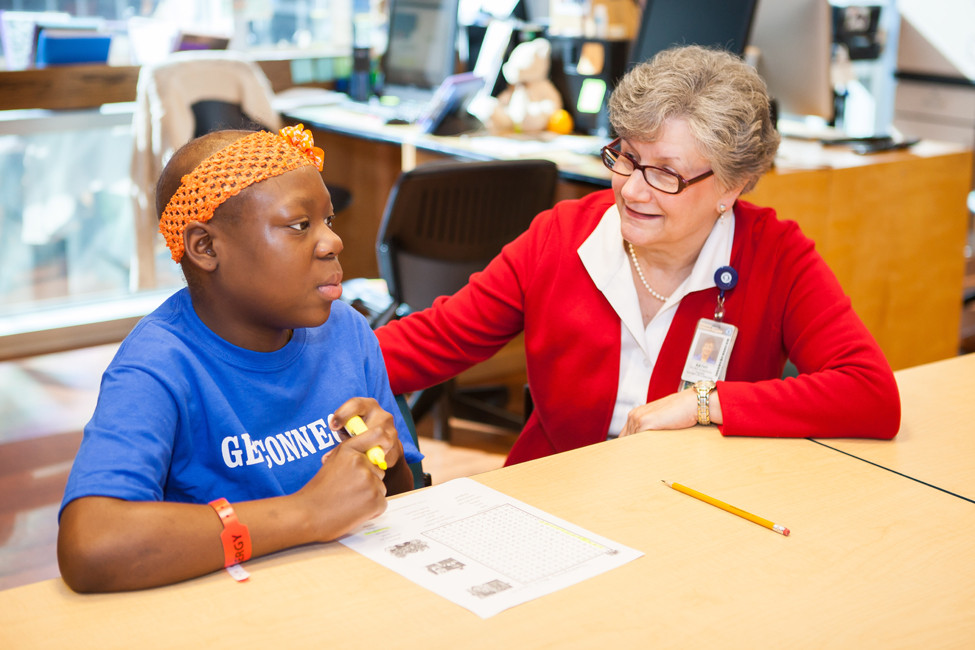Amazing Educators (Special Needs): Kathy Robinson, Arkansas Children's Hospital School Program

Special Needs
Kathy Robinson
Arkansas Children’s Hospital School Program
Kathy Robinson has an extraordinarily tough job. Giving sick children hope and a sense of normalcy is as important to her as working through school lesson plans. And it has been that way for 25 years. Her students are Arkansas Children’s Hospital patients who are fighting serious diseases and chronic illnesses, such as cystic fibrosis and cancer, or children who are waiting for organ transplantation. Children who have been severely burned, as well as teenage mothers whose newborns are in the neonatal unit, are also in school at Children’s. Robinson is one of three teachers who provide bed-side school to those who are in isolation. Students not confined to their rooms can attend classes in a school setting that serves both elementary and high school-age patients. “Being in the group setting with other kids helps them to feel more normal,” Robinson says.
She and the other teachers work with local school districts to acquire each student’s books and assignments. They then assist patients with completing the work they are missing. The goal is to keep kids from falling too far behind while they are dealing with health crises. Robinson also works closely with school districts to help students transition back to school once their hospital stay is complete.
It isn’t difficult to understand what makes Robinson an amazing educator. Her tenacity in the face of extreme hopelessness, at times, is an inspiration. “There are some days that I get rejected quite a lot. I know they are there because they are sick. But I am not going to give up on them,” Robinson says.
Those two words—hope and normalcy—weave their way into most of what Robinson tries to accomplish at Children’s. “I’ve stayed at the job because I love working with those kids. We are giving kids hope that they are going to go back to school. We try to make it fun at a time when they’re not having much fun. And we want them to know that they can learn even when they are sick,” Robinson says.
Robinson fondly tells the story of one boy in the hospital for a heart transplant: “Every time I walked in the room he would cover his head. He wouldn’t talk to me. He didn’t want to have anything to do with me. But I would go back and go back, and the child figured out that I cared about him. Now he’s one of my biggest buddies.”
Aside from being a teacher, she is often a cheerleader, advocate and comforter for the many children and families she encounters. Robinson says parents are often so worried and stressed—especially when they are considering life and death medical decisions—that they do not have the time nor energy to think about the school aspect of their child’s hospital stay.
As students prepare to leave the hospital and return back to their schools, Robinson conducts school re-entry programs for the patient’s classmates and teachers. These help to prepare them for the student’s return. For some kids, such as burn patients or traumatic brain-injury patients, their appearance may be drastically different. “We explain what happened, how the patient will be different and how they can help the patient make a smooth transition back to school. It helps kids to have more empathy if they know what happened,” Robinson says. “And we want them to know that their classmate may look differently, act differently or learn differently, but it’s the same child. They still want to have friends. They still want to do stuff other kids do.”
Robinson, who has one adult son with her husband John, recounts some of the stressful days and how they have impacted her home life. “I would try and turn it off but that’s easier said than done. There have been days when I would come home and cry or come home and go straight to bed. There have been times when I’ve questioned whether I needed to be doing something else—but this work has always called me back.”
